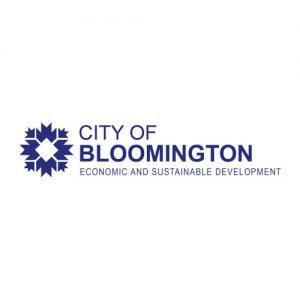
Watershed Plan
About the Project
In fall 2019, Friends of Lake Monroe received grant funding from the Indiana Department of Environmental Management (IDEM) and US Environmental Protection Agency to develop a watershed management plan for Lake Monroe. This two-year project studied problems facing the lake, quantified their magnitude, identified their source(s), and created a strategic action plan for addressing them. Along the way, the project built a coalition of organizations and individuals who are committed to working together to implement the plan. Additional initiatives focused on public engagement and education. The official Watershed Management Plan for Lake Monroe was completed in January 2022.
In addition to the grant funding, this project was made possible by financial support from the Monroe County Stormwater Board, the City of Bloomington Utilities Service Board, the City of Bloomington Office of Economic and Sustainable Development, and the Sassafras Audubon Society. Watershed work is highly collaborative in nature and we are grateful for the support and involvement of the organizations listed below.
City of Bloomington Utilities
Monroe County Stormwater Board
City of Bloomington Office of Economic and Sustainable Development
Sassafras Audubon Society
The Nature Conservancy
Brown County Soil & Water Conservation District
Indiana Department of Natural Resources
United States Forest Service
United States Army Corps of Engineers
League of Women Voters Brown County
League of Women Voters Bloomington-Monroe County
Salt Creek Preservation Group
Conservation Law Center
Monroe County Planning Department
Monroe County Public Works
IU Media School
The Greater Bloomington Chamber of Commerce
Indiana Department of Environmental Management
IU Chemistry
IU O’Neill School of Public and Environmental Affairs
Indiana Geological & Water Survey
Monroe County Soil & Water Conservation District
Visit Bloomington
Fourwinds Lakeside Inn & Marina
USDA Natural Resources Conservation Service
These organizations work with Friends of Lake Monroe to realize our mission to protect and enhance Lake Monroe and its watershed
Project Overview
Writing a watershed management plan is a two-year project with multiple components.
Soliciting stakeholder input. At the launch of the project, Friends of Lake Monroe held two community forums in partnership with the League of Women Voters of Brown County and the League of Women Voters of Bloomington–Monroe County to identify community concerns about Lake Monroe and its watershed. Additional public comment was received throughout the process.
Compiling existing data. Friends of Lake Monroe reviewed available data about topography, soils, land use, impaired streams, water quality, wastewater treatment, previous studies, and other available information.
Collecting and analyzing water samples. This portion of the project was led by the Indiana University Limnology Lab (part of the O’Neill School of Public and Environmental Affairs). E. coli analysis was provided by the City of Bloomington Utilities and fecal contamination source analysis was provided by Scientific Methods.
The IU Limnology Lab collected and analyzed water samples monthly from April 2020 through March 2021 from four streams that feed into Lake Monroe (North Fork Salt Creek, Middle Fork Salt Creek, South Fork Salt Creek, Crooked Creek) and from the tailwaters leaving Lake Monroe.
The IU Limnology Lab collected and analyzed lake samples from three locations within Lake Monroe monthly from May 2020 through October 2020.
Volunteer citizen scientists visited 125 stream sites to collect water samples and habitat data on September 18, 2020, and April 3, 2021.
The IU Limnology Lab and Brown County Regional Sewer District collected 17 stream samples in April 2021 for fecal contamination source analysis.
Gathering observational data. The watershed coordinator worked with volunteers and landowners to gather data about streams in the watershed. Visual inspections at 240 stream crossings were used to evaluate levels of erosion, the size of riparian buffers, land use, livestock access to streams, and other potential concerns.
Building a coalition. The creation of a watershed management plan was guided by a steering committee with members who represent a multitude of stakeholder groups within the watershed.
Educating the public. A big component of the project was educating the public about the importance of watershed protection. Outreach efforts included a tour of the Lake Monroe watershed, classroom lessons to over 100 students, presentations to over 100 community members, over a dozen newspaper articles, and the installation of 30 road signs to designate the boundaries of the Lake Monroe watershed.
Quarterly Updates
Friends of Lake Monroe provided regular project updates through its newsletter, public meetings, and on its blog.
Below are links to quarterly project updates:
Contact Info
Want to learn more about the Lake Monroe Watershed Management Plan or schedule a presentation for your organization? Please reach out to watershed coordinator Maggie Sullivan at watershed@friendsoflakemonroe.org or 812-558-0217.






























